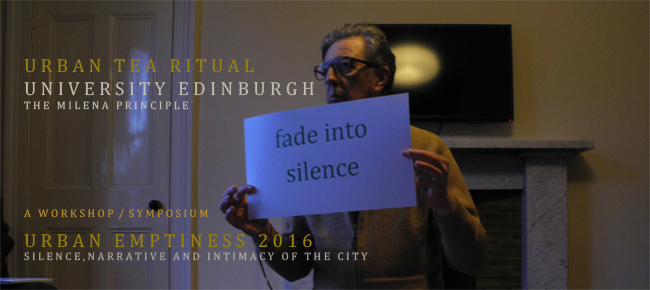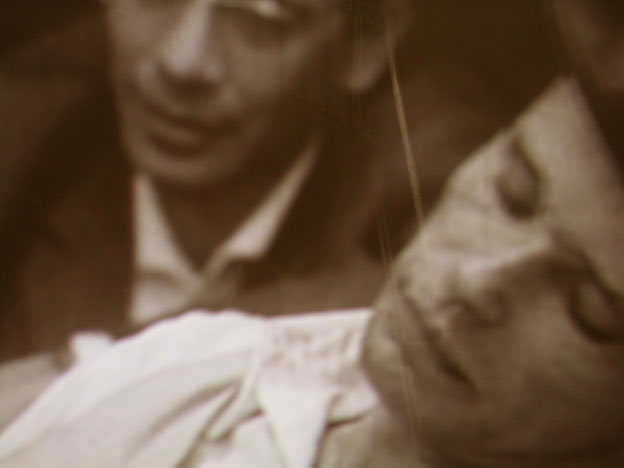
the Milena principle : Concepts
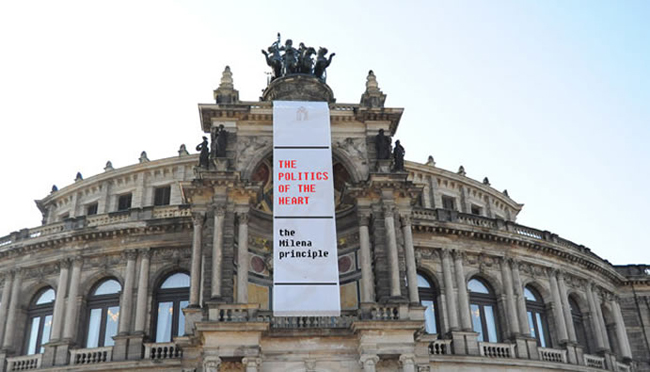
Over the past decade, the Milena Principle has organized a wide range of artistic and cultural events that connect people across Europe.
We’ve built a strong international network spanning more than 15 countries, including individuals, cultural institutions, universities, and museums — all through meaningful personal connections.
Most of our projects have been carried out through the voluntary efforts of our dedicated team and international partners, often with little or no funding or government support. Our audiences have ranged from children to senior citizens, frequently bringing people together across borders and generations.
Here some of our leading concepts:
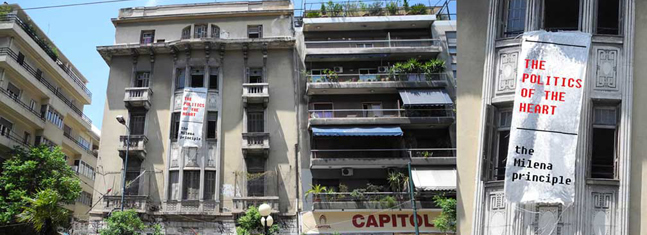
The Politics of the Heart | Strength in Vulnerability
What if politics were poetry? What if nature were our forum for shaping society?
At The Milena Principle, we explore politics not as power, but as a poetic, creative, and deeply human act. Working at the intersection of art, ecology, philosophy, and activism, we embrace vulnerability as a source of strength.
Through workshops, seminars, and participatory projects, we bring together diverse voices across cultures and disciplines. Recent collaborations in Athens and Dresden/Jahnishausen highlight our focus on solidarity, connection, and care.
We believe art is more than explanation—it’s an experience. It offers alternatives to dominant narratives and opens space for empathy, without turning suffering into spectacle. Our autonomous artistic practice fosters new ways of seeing, feeling, and being in the world.
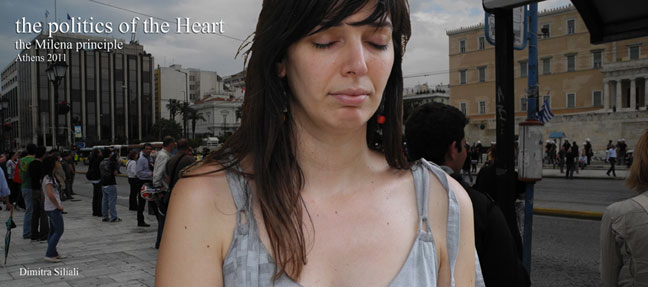
Urban Futures & Environmental Migration
Facing the Silent Crisis
In 2008, more people lived in cities than in rural areas for the first time in history—a trend driven in part by climate change. As environmental degradation continues, millions are being displaced. Yet this unfolding humanitarian crisis remains largely invisible.
By 2050, up to 200 million people may be forced to migrate due to climate-related causes, mostly within their own countries. Many will settle in overcrowded, under-resourced urban areas—especially in the Global South. Behind the numbers are people: losing homes, traditions, and identity.
This shift challenges us to rethink how we design, govern, and inhabit urban spaces. The Milena Principle addresses these questions through art-based dialogue and imaginative, inclusive strategies for the cities of tomorrow.
![]()

Tracing a Nomadic Legacy
The Dürer Connection is a nomadic project and European network (2003–present) inspired by Albrecht Dürer and his Renaissance contemporaries—artists who traveled not only with their work, but through ideas, building deep, cross-border connections.
We continue this tradition by creating artistic journeys that foster co-creation, dialogue, and solidarity across cultures. Travel becomes an artistic tool; the journey itself, a space of exchange.
The Dürer Connection has realized projects in over 15 countries—including Germany, Portugal, Italy, Greece, the Balkans, Latin America, and our home base in Belgium. Through exhibitions, interventions, and public events, we trace a living path of creative affinity—where people, places, and ideas meet.
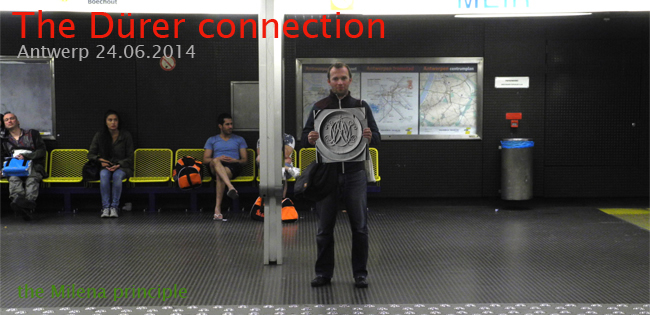
The Milena Principle
A Nomadic Platform for Art and Connection
We are a multidisciplinary collective of artists, thinkers, and practitioners working across Europe and beyond. At the heart of our work is a belief in art as a tool for transformation—social, ecological, and cultural.
Our projects are nomadic, collaborative, and human-centered. Rooted in the legacy of the Renaissance, yet responsive to today’s urgent challenges, we foster spaces of reflection, experimentation, and solidarity.
A Nomadic European Network
At the heart of the Milena Principle is The Dürer Connection (2003–present): a travelling project inspired by the spirit of Renaissance figures like Albrecht Dürer, who crossed borders to exchange ideas with fellow artists, scientists, and thinkers. This nomadic network brings together creators, thinkers, and the public across Europe and beyond. Travel becomes an artistic tool—fostering encounters, co-creation, and cultural dialogue.
The Dürer Connection has led exhibitions, interventions, and collaborative events across Germany, the Netherlands, Portugal, Spain, Italy, Poland, Czech Republic, Romania, Austria, Greece, the Balkans, and Latin America, with a strong base in Belgium.
Through these journeys, the Milena Principle continues to build a living network of solidarity, curiosity, and creative exchange.
![]()

‘Happening’ or ‘Performance’? Where Life and Art Intertwine
At the Milena Principle, we prefer the term ‘happening’ — or ‘action’ — over the word performance. Why? Because most of our actions are unannounced and take place in public spaces, outside traditional art contexts. They are spontaneous, situational, and rooted in the everyday.
We view the body as an artistic instrument — a tool for expression that moves between art and personal experience. These actions are not staged acts, but rather natural extensions of our being as both individuals and artists.
There is no separation between disciplines. Art, life, thought, space, and gesture are all part of a shared continuum. Our happenings are invitations — not to observe from a distance, but to encounter, question, and connect.
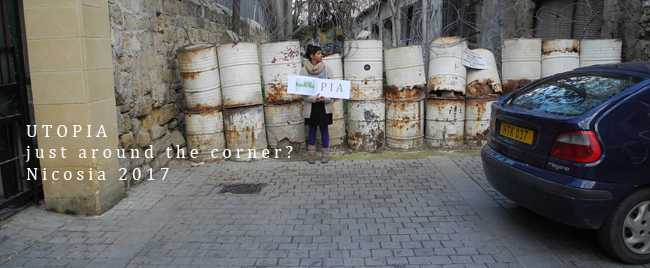
Blurring the Boundaries Between Art and Life
What is a Happening?
The term Happening was introduced by American artist Allan Kaprow (1927–2006), a pioneer of performance art who sought to blur the line between art and life. For Kaprow, art wasn't something to be passively observed—it was something to experience.
His early Happenings, described in Happenings in the New York Scene (1961), were scripted events that combined movement, sound, text, and even scent, engaging both performers and audience in immersive, multi-sensory experiences. Rooted in visual art yet resembling “unconventional theater,” these events defied categorization and challenged traditional hierarchies.
“A Happening is a game, an adventure — a series of activities engaged in by participants for the sake of playing.” — Allan Kaprow
With no clear beginning, middle, or end, and no separation between artist and audience, Happenings were spontaneous, participatory, and always unique. The viewer’s response was integral to the work itself.
Kaprow created around 200 Happenings, which later evolved into more intimate Activities—simple, everyday actions reframed as art. He embraced impermanence and shifted focus from objects to experiences, influencing movements like Fluxus, installation art, and new media art.
Today, Kaprow’s legacy lives on in interactive and participatory art that invites viewers to become co-creators—where meaning is not given, but made, together.
![]()

Ecology | The Silent Workers Network
Ecology lies at the heart of the Milena Principle. All our projects begin with an ecological awareness that goes beyond the environment—it is a state of being.
We collaborate with artists, environmental experts, and communities such as the Convent of Tibães (Portugal), Der Wachsblock (Germany), and the Accademia Dantesca in Jahnishausen (Germany). Jahnishausen Castle will become an interdisciplinary meeting place for art, culture, and ecology, open to broad participation.
Ecology as a Mindset
Postponing or ignoring environmental issues means postponing the future. Once we realize that our existence depends on our surroundings, our care naturally grows.
The Green Transformation
The shift to a sustainable economy requires major changes in technology, infrastructure, and culture. Though challenging, it offers opportunities for innovation, jobs, and independence. This transition is no longer theoretical but a reality—an invitation to build a new model of coexistence.
![]()

Growing Silence | Silence as an Instrument of Experience
Growing Silence explores the value of silence and space within the city. The project is not about silence as mere absence of sound, but as a living experience and a source of knowledge.
Through a phenomenological approach, artists investigate how sound and silence affect human perception in an urban context. Silence is not only acoustic but also an inner, breathing space amidst the city’s bustle.
A Cultural Bridge
The project connects historical and natural soundscapes with the personal experience of silence, creating new ways to listen to and experience urban spaces.
Engaging Young People
We invite students and young artists to participate in designing these spaces of silence. Together, we explore how silence can contribute to the future of the city and how to create places where silence can be truly experienced and appreciated.
Silence as Inspiration
Some members of the Milena Principle have been working with the theme of silence for years.
In 1993, visual artist Stefaan van Biesen created the urban silence project Deafening Silence in his homeland. The Milena Principle draws inspiration from silence artists such as Joseph Beuys, James Lee Byars, and the Spanish artist Tres Silencio—one of Europe’s living icons of silence and art.
Collective of Sound and Visual Artists
Milena Principle collaborates as a collective of sound artists, visual artists, anthropologists, musicologists, and developers. Our projects focus on sound, auditory memory, and the ethics of cultural action.
Using open-source technologies for social engagement, we create interactive sound maps, sound walks, installations, and performances—connecting visual art with sound art. Our work preserves sound memory, honors intangible cultural heritage, and encourages active listener participation in shaping sound heritage.
![]()
Every Human Being an Artist | A Track of Memories That Connects Us
This memory track refers to The Birth of Tragedy, Friedrich Nietzsche’s first work, focusing on the Pre-Socratic era—a time of constant change and flow. Heraclitus described human life as standing in a flowing river, always in motion.
Nietzsche’s Birth of Tragedy marks a return to this original sense of movement and transformation, sparking a second renaissance of philosophical culture long dismissed as primitive.
We see German artist Joseph Beuys (1921–1986) as a key figure in this renaissance. Earlier, Caspar David Friedrich anticipated this shift, depicting landscapes as autonomous worlds—free from religious symbolism—reflecting the inner tragic human experience.
Throughout history, certain figures repeatedly emerge within this tradition of artistic and philosophical thought. This ongoing lineage is not about preserving a fixed worldview, but about continually renewing the discovery of the human and creative process. It centers on finding oneself and sharing that experience—not simply passing on knowledge, but a living process. Just as Joseph Beuys passed on the torch.
![]()
Water Carrier, for I am water now | Urban Tea rituals | culture lab.

We Are Water | An Artistic Journey of Connection
We Are Water is a multidisciplinary art project unfolding across European cities, rooted in the idea that we are connected—like water.
At its heart is a tea ritual performance in Braga, Portugal: an artistic and philosophical gathering that blends visual poetry, conversation, sound, scent, and gesture. This reimagined tea ritual becomes a utopian space of democracy—open, non-hierarchical, and guided by a “politics of the heart.”
Parallel events include performances, talks, and an exhibition featuring drawings, prints, and videos, including We Wish We Were Like Water (Braga, 2010), Writing in Water (Venice Biennale, 2007), Liquid Islands (Venice Biennale, 2011), and Antarctica (Museu Nacional, Brasília).
More than a drink, tea becomes teaism: a mindful art of harmony with nature and self. Rooted in the philosophy of chadao—the “way of tea”—it merges aesthetics, ethics, and quiet reflection.
We Are Water invites participants into a poetic, shared space—where art flows, like water, connecting us all.
![]()
![]()
Tempus Fugit | Hourglass | 24-Hour Exhibition
Tempus Fugit is a traveling pop-up art project that unfolds over 24 hours on location.
This temporary event creates a unique space where timeless concepts like silence, slowness, and the body as a unit of measure come alive within a limited timeframe. The exhibition blends artworks and site-inspired performances into a continuous process.
Visitors are invited to actively participate, completing the artwork through their presence. Here, the audience becomes part of the art itself.
An exhibition as a lab [ Amsterdam 2006 | a living room | artistic pop up events ]
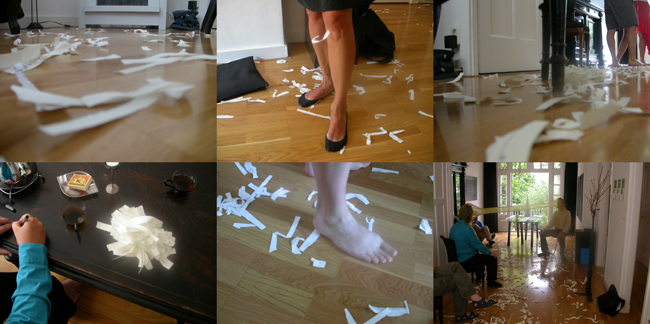
The Table of Meetings | Amsterdam, July 2006
At the end of July 2006, the Milena principle was invited by German artist Niki Fröhling to participate in Tafel der Ontmoetingen | Table of Meetings in Amsterdam. This event marked the first chapter of their collective project Gepäckträger (“Luggage Carrier”), which had begun in Berlin earlier that month.
The Milena artists reunited in Amsterdam after their travels across Europe for a 24-hour exhibition centered on interaction and dialogue, shaped by the specific place and time. The theme was Resident of Cities.
Designed as a laboratory, the exhibition featured new in situ artworks created with minimal materials, forming part of a lightweight, transportable traveling show. The day before, Geert Vermeire annotated drawings by Stefaan van Biesen made during their Berlin stay. Photographs of the Water Curtain performance at Bellevuepark and the Grunewald Variations in Berlin were printed, described, and displayed on the exhibition walls.
A room as a meeting place
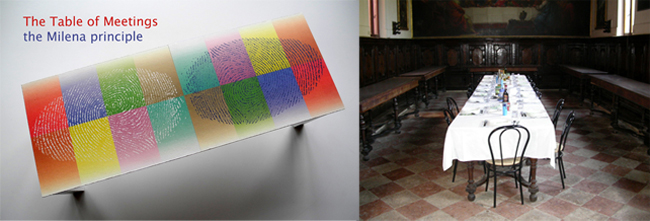
A 24-Hour Exhibition | A Field of Connection
We collaborate on-site with local teams, residents, youth, seniors, and immigrants to create small but meaningful changes in public spaces through art and creativity. Our approach embraces peaceful, contemplative actions that gently awaken urban awareness and inspire hope for a better future. By engaging communities in shaping their environments, we aim to excite people about their cities and foster connections across different cities and countries. Central to this is our Table of Meetings: a mobile gathering point that brings people together in shared dialogue and exchange.

The Table of Meetings & The Path of Dürer
Art as a Mobile Space for Dialogue and Connection
The Table of Meetings is a portable, adaptable table designed for multidisciplinary encounters. Marked with a large fingerprint symbolizing identity, respect, and sharing, it invites openness and intimacy in public space. Here, people gather to eat, talk, write, and share stories—breaking isolation and fostering human connection. Media created during these events—videos, texts, soundscapes—travel with the table, enriching each new gathering.
As artist-nomads working at the intersection of art, ecology, and politics, we organize participatory street actions across Europe, using the Table of Meetings as a mobile catalyst for dialogue and exchange.
We aim to spark new alliances and imagine art as a poetic, creative, and human force that shapes society. Our work is fueled by collaborations across cultures and disciplines—from science and alternative health to sound art and philosophy. We host open, mobile debates that integrate visual art, writing, video, and the often-overlooked acoustic dimension of public space.
Together, the Table of Meetings and The Path of Dürer invite us to reclaim public space as a shared, living experience—where personal identity and social connection grow from place and presence.

![]()


